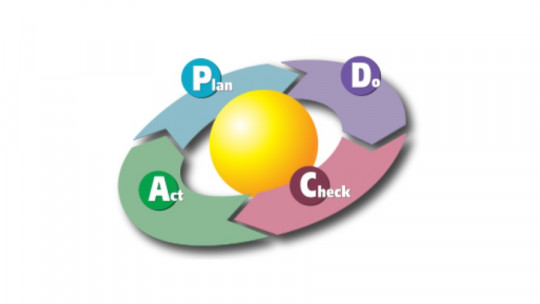Companies tend to increasingly optimize their processes, and to achieve this, different procedures are constantly emerging that pursue that objective.
Quality circles are a good example of this Throughout this article we will study in detail all its characteristics, how it is carried out and we will discover what its strongest points are if we decide to use it in our own organization.
What are quality circles?
Quality circles refer to a business methodology that seeks the optimization of processes through groups of workers (circles) who share different problems and aspects that could be improved that they have found in their respective departments with the aim of pooling different ideas and reaching solutions that allow them to resolve the greatest number of incidents that they had previously detected in the analysis carried out.
Once the members of the quality circles have reached these agreements, the next step would be transfer the chosen ideas to those responsible for each department so that they can study them carefully check whether their application is viable and, if they agree, implement them, allocating the departmental resources needed so that the new processes come into operation and their effects can be noticed as soon as possible.
What makes quality circles so effective and valuable is that the information provided by workers from the different sections of the company is first-hand and spontaneous; they are problems that they observe and experience themselves on a daily basis, so which are not inferences or deductions based on third party data. In this way, information of incalculable value is available to improve quality processes.
This methodology emerged in Japan in the 1960s, a country always at the forefront in the implementation of new procedures to improve quality management. The creator of this new method was the businessman and chemist Kaoru Ishikawa. Since their very creation, quality circles have not stopped being implemented in many Asian companies, demonstrating their effectiveness in organizations with the classic Eastern cultural background.
However, in Its origin did not have the same success in the Western business world, a relatively common problem when it comes to exporting methodologies to very different cultural areas But it is a problem with a solution, since the question is to adapt these methods to the idiosyncrasies of the place where we want to implement them. With adequate cultural adaptation, quality circles are just as effective in the West as in the East.
Characteristics
In quality circles there is the figure of the facilitator, a person in charge of coordinating the group and explaining the dynamics to follow. The facilitator provides appropriate training in the methodology to the rest of the colleagues. All members will hold these meetings during working hours, and they will do so with a certain regularity as agreed by everyone and the priority of the issues to be analyzed in each session.
The facilitator will only be responsible for requesting the participation of the different members of the quality circle and guiding the process, but must never evaluate the proposals made, nor pronounce in favor or against any of them, and must maintain objectivity in all the time. It would be within their duties to calm down possible conflict situations that could arise between different components, once again urging the members to continue with the methodology.
Regarding the size of the group, It is recommended that each quality circle contain at least four participants and trying not to have more than eight These are the recommended figures, but the total number can be adapted to the particular characteristics of the company, the number of departments it has or if you want to deal with particular cases that imply the presence of more workers from the organization.
From among these members (since the figure of the facilitator is separate), one must be chosen as spokesperson for the group. He will be the one who, once the session is over, provides the corresponding summary with the chosen measures to the different heads of the departments. The authorship of said document corresponds to the entire team, not to anyone specifically, since the decisions have been made jointly, so no individual signature will be recorded.
The quality circles will meet again cyclically, according to the needs of the company, although it is recommended that there be at least one meeting in each year. Likewise, the creation of other independent quality circles can be encouraged to deal with different issues, so that there are several teams working complementary at the same time and thus solving various problems in less time, which further optimizes the procedure.
Implementation of this methodology to organizations
In order to implement the quality circle methodology, the first thing we need is the approval of the company’s management, of course. Once the plan is presented, those responsible must support it and promote the proper functioning of the circles from now on, an essential condition for them to prosper, since Without the trust of company leaders, we cannot expect quality circles to develop the full potential they contain
Once we have the green light, an implementation program adapted to the characteristics of the company must be designed, encouraging the spontaneous appearance of the circles, as it is the ideal scenario for the start of this program. All quality circles must be supported by an independent organization, which provides all the resources they need for their proper functioning, in terms of spaces, materials or any other means required.
The next step will be choose the facilitators of the different quality circles and give them appropriate training so that they can carry out the tasks entrusted to them. At this point, the company can now officially communicate to all workers the implementation of this methodology so that anyone who wishes can participate in the processes. It is important that the entire staff is aware of this situation, since one of the keys for quality circles to work is communication.
Next, you should decide which are the most important issues and therefore to which you should dedicate time at the beginning of the program. You do not have to be too ambitious and deal with all the problems at the same time, but rather you have to build a scale of priorities and try to resolve each issue before moving on to the next. Furthermore, it is important that the first problems treated have a relatively simple solution, since starting successfully is key to promoting implementation.
Everything would be ready to start the operation of the first quality circles in the company. It may happen that on these first occasions workers are reluctant to participate , perhaps because of the proposed themes. In that case, the appropriate thing would be to wait a while to propose the creation of the circles again, proposing different issues this time, hoping that this change will motivate the first members to make their appearance.
Contents
The topics that must be discussed in quality circles are very varied, especially depending on the type of company and the sector in which it is located. However, There are general guidelines that are suitable for multiple companies and that can be a good guide to start putting the methodology into practice. Likewise, there are also a series of issues that should never be chosen as topics to be discussed within circles.
As examples of those that are likely to be chosen, we would have the increase in the quality of the product or service offered, improve the company’s communication channels and interdepartmental coordination, minimize bureaucratic processes, reduce costs, offer customer service. more satisfactory client, improve working conditions at an environmental level (comfort, cleanliness and safety) or shorten deadlines, as far as possible.
But we already anticipated that There are topics that are not suitable to be analyzed by security circles For example, we should never discuss the working conditions of employees, question the capabilities of team leaders or other colleagues, evaluate the business strategies that are being carried out, or comment on any other series of issues. company decisions such as dismissals or promotions of certain people.









